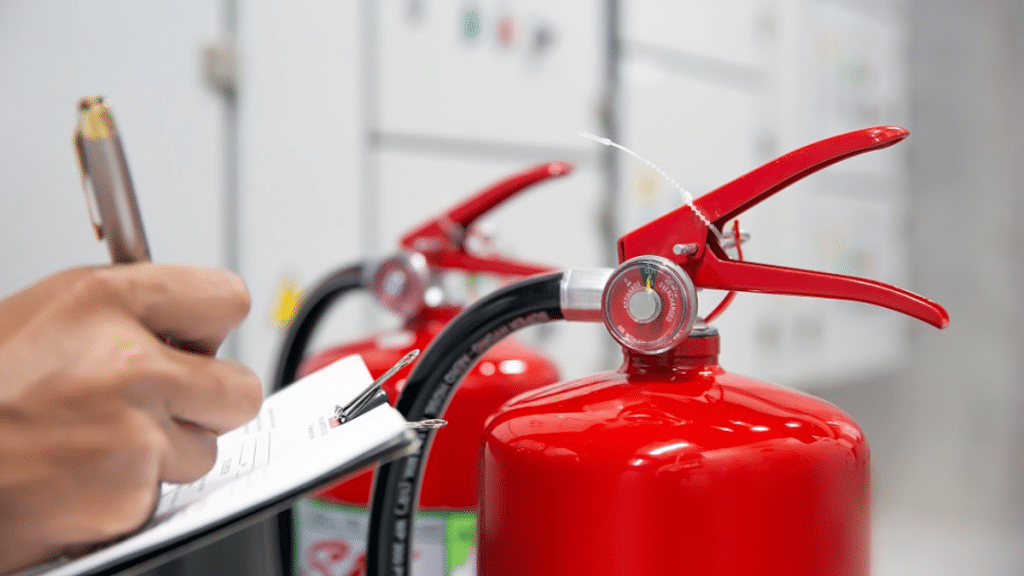Fire safety is a legal obligation, a critical risk management strategy, and, most importantly, a lifesaving protocol. Organisations of all sizes are responsible for ensuring their premises meet the latest safety standards and are adequately prepared to protect staff, visitors, and assets in the event of an emergency. One of the most effective ways to do this is through a thorough fire safety compliance audit—and a key element within that audit is planning for individuals with additional evacuation needs, using PEEP templates.
A PEEP, or Personal Emergency Evacuation Plan, ensures that individuals who may need assistance during an emergency are accounted for in a building’s evacuation strategy. This guide will walk you through how to conduct a fire safety audit, why PEEPs are essential, and how they integrate with your building’s overall evacuation procedures, including compliant evacuation diagrams.
What Is a Fire Safety Compliance Audit?
A fire safety compliance audit is a structured evaluation of a building’s fire preparedness. It assesses the facility’s ability to detect, contain, and respond to fire-related emergencies and ensures adherence to national regulations such as:
- The Work Health and Safety (WHS) Act
- Building Code of Australia (BCA)
- AS 1851 (Maintenance of Fire Protection Systems and Equipment)
- AS 3745:2010 (Planning for Emergencies in Facilities)
Audits involve checking safety systems, staff training, fire-fighting equipment, signage, emergency plans, and physical infrastructure to ensure all elements align with legal requirements and best practices.
Key Components of a Fire Safety Compliance Audit
- Fire Detection and Alarm Systems
- Functional smoke and heat detectors
- Reliable alarm and alert systems
- Maintenance records in compliance with AS 1851
- Fire-Fighting Equipment
- Accessible and maintained fire extinguishers, hose reels, and hydrants
- Clear instructions and signage for use
- Staff knowledge of extinguisher types and applications
- Evacuation Procedures and Training
- Documented emergency procedures
- Regular fire drills and warden training
- Updated contact lists for emergency services
- Evacuation Diagrams
- Strategically placed, up-to-date diagrams
- Clearly marked exits, assembly points, and equipment
- Compliance with AS 3745:2010 for format and positioning
- Accessibility and PEEPs
- Identification of staff or visitors who may require assistance
- PEEPs in place and reviewed regularly
- Procedures and training to support mobility-impaired individuals
Understanding PEEPs and Their Role in Fire Safety
A PEEP—Personal Emergency Evacuation Plan—is a tailored document that outlines how individuals with mobility, sensory, or cognitive impairments will evacuate during an emergency. These plans are particularly critical in multi-level buildings, aged care facilities, schools, hospitals, and any workplace where individuals may face barriers to independent evacuation.
Who Needs a PEEP?
- PEEPs are designed for individuals who:
- Use wheelchairs or mobility aids
- Are blind or have low vision
- Are deaf or hard of hearing
- Experience temporary impairments (e.g., injury, pregnancy)
- Have anxiety, cognitive challenges, or other conditions affecting response time
Employers and building managers should regularly assess the need for PEEPs as part of their overall safety and inclusion policies.
What Should a PEEP Include?
Each PEEP should be specific to the individual and their environment. Common elements include:
- The individual’s name and usual location in the building
- Nature of their assistance requirement
- Designated evacuation support personnel
- Step-by-step evacuation procedure
- Backup procedures in case of absent staff
- Equipment (e.g., evacuation chairs, alarms with visual cues)
- Contact details and emergency numbers
Integrating PEEPs into Your Fire Safety Compliance Strategy
During your fire safety compliance audit, PEEPs should be reviewed alongside your site’s emergency response procedures. Integration is key—these plans shouldn’t sit in isolation. They must work in tandem with:
- Warden training programs
- Emergency control organisation (ECO) briefings
- Building access modifications (e.g., ramps, wide exits)
- Communication protocols (such as buddy systems or visual alert systems)
PEEPs should also be reflected in your facility’s evacuation diagrams, ensuring assembly points and safe paths are accessible for all occupants.
Using PEEP Templates for Standardisation and Clarity
To simplify the process, use structured PEEP templates. These pre-formatted documents help ensure consistency across your organisation and make it easier for staff to complete, update, and distribute plans.
A quality PEEP template should:
- Be easy to complete with minimal jargon
- Allow for customisation based on individual and environmental needs
- Include sections for review dates, approvals, and emergency contacts
- Align with your workplace’s emergency management policy
First 5 Minutes offers practical templates as part of their emergency planning and training services, helping you create inclusive, legally compliant emergency response frameworks.
Common Mistakes to Avoid During a Compliance Audit
- Failing to review evacuation diagrams regularly – Outdated diagrams can lead to confusion and non-compliance.
- Neglecting short-term or temporary PEEP needs – Injuries, illness, or even pregnancy can necessitate short-term adjustments.
- Overlooking visitor needs – Guests unfamiliar with your procedures must also be considered in your emergency planning.
- Assuming standard procedures cover everyone – Generic plans often exclude those who need tailored assistance.
Why Work with Experts Like First 5 Minutes
Conducting a comprehensive fire safety compliance audit can be complex, especially when incorporating specialised elements like PEEPs. That’s where the expertise of First 5 Minutes becomes invaluable.
They provide:
- On-site audits and compliance assessments
- Custom PEEP template development
- Fire warden and evacuation training
- Emergency diagram design and compliance checks
- Ongoing support to update and review documentation
Their tailored approach ensures your emergency planning doesn’t just tick boxes—it actually works in practice when the alarm sounds.
Final Thoughts
Fire safety is everyone’s responsibility—but it starts with leadership, planning, and preparation. A structured fire safety compliance audit combined with inclusive PEEP planning ensures that no one is left behind in an emergency. From accessible evacuation diagrams to personalised response plans, proactive steps today can protect lives tomorrow.
By investing in the right tools, training, and expertise—like those offered by First 5 Minutes—you can build a safer, more compliant workplace for every occupant.
